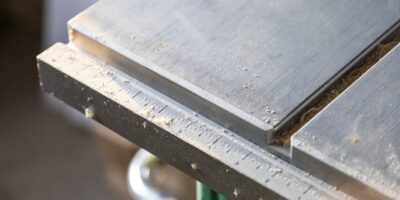Best Bandsaw Blades: A Comprehensive Guide
Choosing the right bandsaw blade can make a significant difference in your woodworking or metalworking projects. The market offers a variety of bandsaw blades, each designed for specific applications and materials. This guide explores the best bandsaw blades available, highlighting their features, benefits, and usage scenarios.
Types of Bandsaw Blades
Bandsaw blades come in several types, each suited for different tasks and materials. The main types include:
- Carbon Steel Blades
- Bimetal Blades
- Carbide-Tipped Blades
- Specialty Blades
Carbon Steel Blades
Carbon steel blades are popular for their affordability and versatility. They work well on wood, plastic, and non-ferrous metals. These blades are not as durable as others but are easy to sharpen. They are ideal for hobbyists and light-duty cutting.
Bimetal Blades
Bimetal blades combine high-speed steel teeth with a flexible alloy steel backing. This construction provides durability and resistance to wear. They are suitable for cutting ferrous and non-ferrous metals, wood, and composites. Bimetal blades are a good choice for professionals who need long-lasting performance.
Carbide-Tipped Blades
Carbide-tipped blades feature carbide teeth, which stay sharp longer and provide a smooth cut. These blades excel in cutting hardwoods, abrasive materials, and metals. While they are more expensive, their longevity and precision justify the cost for intensive and high-precision work.
Specialty Blades
Specialty blades are designed for unique materials or specific cutting requirements. Examples include blades for cutting meat, bone, or ceramics. These are used in industries where precision and specific material compatibility are paramount.
Factors to Consider When Choosing a Bandsaw Blade
Selecting the best bandsaw blade involves considering several factors:
- Blade Material
- Tooth Configuration
- Blade Width
- Blade Thickness
- Tooth Per Inch (TPI)
Blade Material
The material of the blade dictates its durability and cutting efficiency. Carbon steel and bimetal are suitable for general tasks, while carbide-tipped blades offer superior performance for demanding cuts.
Tooth Configuration
Tooth configuration affects the cut quality and speed. Common configurations include:
- Regular Teeth: Best for general-purpose cutting.
- Hook Teeth: Deliver aggressive, fast cuts.
- Skip Teeth: Reduce clogging for cleaner cuts.
Blade Width
Blade width impacts the cutting radius and stability. Wider blades are stable and suitable for straight cuts, while narrow blades are flexible for intricate curves.
Blade Thickness
Blade thickness influences durability and resistance to breakage. Thicker blades are robust but need more power, whereas thinner blades are flexible but more prone to wear.
Tooth Per Inch (TPI)
A blade’s TPI affects the smoothness and speed of the cut. Higher TPI blades yield smoother cuts but slow down the process. Lower TPI blades cut faster but leave a rougher finish.
Top Bandsaw Blade Recommendations
Lenox Diemaster 2
The Lenox Diemaster 2 is a bimetal blade known for its durability and versatility. Suitable for cutting wood, metals, and plastics, this blade offers a balance of precision and strength. Its resistance to heat and wear makes it a reliable choice for professionals.
Timber Wolf Bandsaw Blades
Timber Wolf bandsaw blades are renowned for their low tension and high performance. Made from Swedish silicon steel, these blades reduce wear on the saw and produce smooth cuts. They are designed for woodworkers seeking accuracy and longevity.
Starrett Intenss Pro-Die
The Starrett Intenss Pro-Die is a high-speed bimetal blade designed for tough materials. It features ground teeth for precise cuts and an alloy steel backing for flexibility. This blade is ideal for cutting hard woods, metals, and plastics efficiently.
Olson All-Pro
The Olson All-Pro series includes bimetal and carbide-tipped blades. Known for their longevity and sharpness, these blades are excellent for woodworking, metalworking, and cutting composites. Users appreciate the clean, accurate cuts and durability.
DeWalt DW3984C
The DeWalt DW3984C is a portable bimetal blade designed for metal cutting. Its high-speed steel edge and flexible backing handle tough materials with ease. This blade is highly regarded in the construction and metalworking industries.
Maintaining Bandsaw Blades
Proper maintenance extends the life of your bandsaw blades and ensures consistent performance. Key maintenance practices include:
- Regular Cleaning
- Proper Tensioning
- Routine Inspections
- Using Blade Lubricants
Regular Cleaning
Remove debris, pitch, and resin buildup from the blade using a blade cleaning solution. Clean blades perform better and last longer.
Proper Tensioning
Ensure the blade is correctly tensioned according to manufacturer specifications. Over-tensioning can cause breakage, while under-tensioning leads to inaccurate cuts.
Routine Inspections
Inspect blades for signs of wear, damage, or dull teeth. Early detection of issues prevents further damage and maintains cut quality.
Using Blade Lubricants
Apply appropriate lubricants to the blade, especially when cutting metals. Lubricants reduce friction and heat, extending blade life and improving cut quality.
Common Issues and Solutions
Bandsaw blades may encounter common issues, such as blade drift, breakage, and overheating. Addressing these issues promptly can ensure efficient operation:
Blade Drift
Blade drift happens when the blade wanders off the cutting line. It can be caused by improper tension, dull teeth, or incorrect tracking. Ensure the blade is tensioned correctly, teeth are sharp, and adjust the tracking mechanism as needed.
Blade Breakage
Blade breakage can occur due to excessive tension, improper use, or material defects. Regularly check the tension, use the blade within its intended capacity, and inspect for any visible defects before use.
Overheating
Overheating reduces blade life and affects cut quality. It may result from improper lubrication or cutting at excessive speeds. Use appropriate lubricants and adjust cutting speeds to match the material being cut.
Safety Tips for Using Bandsaw Blades
- Wear appropriate personal protective equipment, such as safety glasses and gloves.
- Ensure the saw is properly maintained and in good working condition.
- Follow manufacturer guidelines for blade installation and tensioning.
- Keep hands and fingers clear of the blade path.
- Use push sticks or guides when cutting small or narrow pieces.
- Turn off the saw and disconnect the power before changing blades or performing maintenance.
“`
Recommended Woodworking Tools
HURRICANE 4-Piece Wood Chisel Set – $13.99
CR-V steel beveled edge blades for precision carving.
GREBSTK 4-Piece Wood Chisel Set – $13.98
Sharp bevel edge bench chisels for woodworking.
As an Amazon Associate, we earn from qualifying purchases.




Subscribe for Updates
Get the latest articles delivered to your inbox.
We respect your privacy. Unsubscribe anytime.